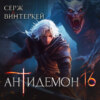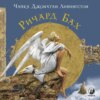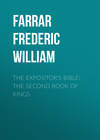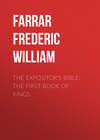Читать книгу: «The Expositor's Bible: The Book of Daniel», страница 2
CHAPTER II
GENERAL SURVEY OF THE BOOK
1. The Language
Unable to learn anything further respecting the professed author of the Book of Daniel, we now turn to the Book itself. In this section I shall merely give a general sketch of its main external phenomena, and shall chiefly pass in review those characteristics which, though they have been used as arguments respecting the age in which it originated, are not absolutely irreconcilable with the supposition of any date between the termination of the Exile (b. c. 536) and the death of Antiochus Epiphanes (b. c. 164).
I. First we notice the fact that there is an interchange of the first and third person. In chapters i. – vi. Daniel is mainly spoken of in the third person: in chapters vii. – xii. he speaks mainly in the first.
Kranichfeld tries to account for this by the supposition that in chapters i. – vi. we practically have extracts from Daniel's diaries,35 whereas in the remainder of the Book he describes his own visions. The point cannot be much insisted upon, but the mention of his own high praises (e. g., in such passages as vi. 4) is perhaps hardly what we should have expected.
II. Next we observe that the Book of Daniel, like the Book of Ezra36 is written partly in the sacred Hebrew, partly in the vernacular Aramaic, which is often, but erroneously, called Chaldee.37
The first section (i. 1-ii. 4a) is in Hebrew. The language changes to Aramaic after the words, "Then spake the Chaldeans to the king in Syriac" (ii. 4a);38 and this is continued to vii. 28. The eighth chapter begins with the words, "In the third year of the reign of King Belshazzar a vision appeared unto me, even unto me Daniel"; and here the Hebrew is resumed, and is continued till the end of the Book.
The question at once arises why the two languages were used in the same Book.
It is easy to understand that, during the course of the seventy years' Exile, many of the Jews became practically bilingual, and would be able to write with equal facility in one language or in the other.
This circumstance, then, has no bearing on the date of the Book. Down to the Maccabean age some books continued to be written in Hebrew. These books must have found readers. Hence the knowledge of Hebrew cannot have died away so completely as has been supposed. The notion that after the return from the Exile Hebrew was at once superseded by Aramaic is untenable. Hebrew long continued to be the language normally spoken at Jerusalem (Neh. xiii. 24), and the Jews did not bring back Aramaic with them to Palestine, but found it there.39
But it is not clear why the linguistic divisions in the Book were adopted. Auberlen says that, after the introduction, the section ii. 4a-vii. 28 was written in Chaldee, because it describes the development of the power of the world from a world-historic point of view; and that the remainder of the Book was written in Hebrew, because it deals with the development of the world-powers in their relation to Israel the people of God.40 There is very little to be said in favour of a structure so little obvious and so highly artificial. A simpler solution of the difficulty would be that which accounts for the use of Chaldee by saying that it was adopted in those parts which involved the introduction of Aramaic documents. This, however, would not account for its use in chap. vii., which is a chapter of visions in which Hebrew might have been naturally expected as the vehicle of prophecy. Strack and Meinhold think that the Aramaic and Hebrew parts are of different origin. König supposes that the Aramaic sections were meant to indicate special reference to the Syrians and Antiochus.41 Some critics have thought it possible that the Aramaic sections were once written in Hebrew. That the text of Daniel has not been very carefully kept becomes clear from the liberties to which it was subjected by the Septuagint translators. If the Hebrew of Jer. x. 11 (a verse which only exists in Aramaic) has been lost, it is not inconceivable that the same may have happened to the Hebrew of a section of Daniel.42
The Talmud throws no light on the question. It only says that —
i. "The men of the Great Synagogue wrote"43– by which is perhaps meant that they "edited" – "the Book of Ezekiel, the Twelve Minor Prophets, the Book of Daniel, and the Book of Ezra";44 and that —
ii. "The Chaldee passages in the Book of Ezra and the Book of Daniel defile the hands."45
The first of these two passages is merely an assertion that the preservation, the arrangement, and the admission into the Canon of the books mentioned was due to the body of scribes and priests – a very shadowy and unhistorical body – known as the Great Synagogue.46
The second passage sounds startling, but is nothing more than an authoritative declaration that the Chaldee sections of Daniel and Ezra are still parts of Holy Scripture, though not written in the sacred language.
It is a standing rule of the Talmudists that All Holy Scripture defiles the hands– even the long-disputed Books of Ecclesiastes and Canticles.47 Lest any should misdoubt the sacredness of the Chaldee sections, they are expressly included in the rule. It seems to have originated thus: The eatables of the heave offerings were kept in close proximity to the scroll of the Law, for both were considered equally sacred. If a mouse or rat happened to nibble either, the offerings and the books became defiled, and therefore defiled the hands that touched them.48 To guard against this hypothetical defilement it was decided that all handling of the Scriptures should be followed by ceremonial ablutions. To say that the Chaldee chapters "defile the hands" is the Rabbinic way of declaring their Canonicity.
Perhaps nothing certain can be inferred from the philological examination either of the Hebrew or of the Chaldee portions of the Book; but they seem to indicate a date not earlier than the age of Alexander (b. c. 333). On this part of the subject there has been a great deal of rash and incompetent assertion. It involves delicate problems on which an independent and a valuable opinion can only be offered by the merest handful of living scholars, and respecting which even these scholars sometimes disagree. In deciding upon such points ordinary students can only weigh the authority and the arguments of specialists who have devoted a minute and lifelong study to the grammar and history of the Semitic languages.
I know no higher contemporary authorities on the date of Hebrew writings than the late veteran scholar F. Delitzsch and Professor Driver.
1. Nothing was more beautiful and remarkable in Professor Delitzsch than the open-minded candour which compelled him to the last to advance with advancing thought; to admit all fresh elements of evidence; to continue his education as a Biblical inquirer to the latest days of his life; and without hesitation to correct, modify, or even reverse his previous conclusions in accordance with the results of deeper study and fresh discoveries. He wrote the article on Daniel in Herzog's Real-Encyclopädie, and in the first edition of that work maintained its genuineness; but in the later editions (iii. 470) his views approximate more and more to those of the Higher Criticism. Of the Hebrew of Daniel he says that "it attaches itself here and there to Ezekiel, and also to Habakkuk; in general character it resembles the Hebrew of the Chronicler who wrote shortly before the beginning of the Greek period (b. c. 332), and as compared either with the ancient Hebrew, or with the Hebrew of the Mishnah is full of singularities and harshnesses of style."49
So far, then, it is clear that, if the Hebrew mainly resembles that of b. c. 332, it is hardly likely that it should have been written before b. c. 536.
Professor Driver says, "The Hebrew of Daniel in all distinctive features resembles, not the Hebrew of Ezekiel, or even of Haggai and Zechariah, but that of the age subsequent to Nehemiah" – whose age forms the great turning-point in Hebrew style.
He proceeds to give a list of linguistic peculiarities in support of this view, and other specimens of sentences constructed, not in the style of classical Hebrew, but in "the later uncouth style" of the Book of Chronicles. He points out in a note that it is no explanation of these peculiarities to argue that, during his long exile, Daniel may have partially forgotten the language of his youth; "for this would not account for the resemblance of the new and decadent idioms to those which appeared in Palestine independently two hundred and fifty years afterwards."50 Behrmann, in the latest commentary on Daniel, mentions, in proof of the late character of the Hebrew: (1) the introduction of Persian words which could not have been used in Babylonian before the conquest of Cyrus (as in i. 3, 5, xi. 45, etc.); (2) many Aramaic or Aramaising words, expressions, and grammatical forms (as in i. 5, 10, 12, 16, viii. 18, 22, x. 17, 21, etc.); (3) neglect of strict accuracy in the use of the Hebrew tenses (as in viii. 14, ix. 3 f., xi. 4 f., etc.); (4) the borrowing of archaic expressions from ancient sources (as in viii. 26, ix. 2, xi. 10, 40, etc.); (5) the use of technical terms and periphrases common in Jewish apocalypses (xi. 6, 13, 35, 40, etc.).51
2. These views of the character of the Hebrew agree with those of previous scholars. Bertholdt and Kirms declare that its character differs toto genere from what might have been expected had the Book been genuine. Gesenius says that the language is even more corrupt than that of Ezra, Nehemiah, and Malachi. Professor Driver says the Persian words presuppose a period after the Persian Empire had been well established; the Greek words demand, the Hebrew supports, and the Aramaic permits a date after the conquest of Palestine by Alexander the Great. De Wette and Ewald have pointed out the lack of the old passionate spontaneity of early prophecy; the absence of the numerous and profound paronomasiæ, or plays on words, which characterised the burning oratory of the prophets; and the peculiarities of the style – which is sometimes obscure and careless, sometimes pompous, iterative, and artificial.52
3. It is noteworthy that in this Book the name of the great Babylonian conqueror, with whom, in the narrative part, Daniel is thrown into such close connexion, is invariably written in the absolutely erroneous form which his name assumed in later centuries – Nebuchadnezzar. A contemporary, familiar with the Babylonian language, could not have been ignorant of the fact that the only correct form of the name is Nebuchadrezzar —i. e., Nebu-kudurri-utsur, "Nebo protect the throne."53
4. But the erroneous form Neduchadnezzar is not the only one which entirely militates against the notion of a contemporary writer. There seem to be other mistakes about Babylonian matters into which a person in Daniel's position could not have fallen. Thus the name Belteshazzar seems to be connected in the writer's mind with Bel, the favourite deity of Nebuchadrezzar; but it can only mean Balatu-utsur, "his life protect," which looks like a mutilation. Abed-nego is an astonishingly corrupt form for Abed-nabu, "the servant of Nebo." Hammelzar, Shadrach, Meshach, Ashpenaz, are declared by Assyriologists to be "out of keeping with Babylonian science." In ii. 48 signîn means a civil ruler; – does not imply Archimagus, as the context seems to require, but, according to Lenormant, a high civil officer.
5. The Aramaic of Daniel closely resembles that of Ezra. Nöldeke calls it a Palestinian or Western Aramaic dialect, later than that of the Book of Ezra.54 It is of earlier type than that of the Targums of Jonathan and Onkelos; but that fact has very little bearing on the date of the Book, because the differences are slight, and the resemblances manifold, and the Targums did not appear till after the Christian Era, nor assume their present shape perhaps before the fourth century. Further, "recently discovered inscriptions have shown that many of the forms in which the Aramaic of Daniel differs from that of the Targums were actually in use in neighbouring countries down to the first century a. d."55
6. Two further philological considerations bear on the age of the Book.
i. One of these is the existence of no less than fifteen Persian words (according to Nöldeke and others), especially in the Aramaic part. These words, which would not be surprising after the complete establishment of the Persian Empire, are surprising in passages which describe Babylonian institutions before the conquest of Cyrus.56 Various attempts have been made to account for this phenomenon. Professor Fuller attempts to show, but with little success, that some of them may be Semitic.57 Others argue that they are amply accounted for by the Persian trade which, as may be seen from the Records of the Past,58 existed between Persia and Babylonia as early as the days of Belshazzar. To this it is replied that some of the words are not of a kind which one nation would at once borrow from another,59 and that "no Persian words have hitherto been found in Assyrian or Babylonian inscriptions prior to the conquest of Babylon by Cyrus, except the name of the god Mithra."
ii. But the linguistic evidence unfavourable to the genuineness of the Book of Daniel is far stronger than this, in the startling fact that it contains at least three Greek words. After giving the fullest consideration to all that has been urged in refutation of the conclusion, this circumstance has always been to me a strong confirmation of the view that the Book of Daniel in its present form is not older than the days of Antiochus Epiphanes.
Those three Greek words occur in the list of musical instruments mentioned in iii. 5, 7, 10, 15. They are: קיתרם, kitharos, κίθαρις, "harp"; פסנתרין, psanterîn, ψαλτήριον, "psaltery";60 סומפניא, sūmpōnyāh, συμφωνία, A.V. "dulcimer," but perhaps "bagpipes."61
Be it remembered that these musical instruments are described as having (b. c. 550). Now, this is the date at which Pisistratus was tyrant at Athens, in the days of Pythagoras and Polycrates, before Athens became a fixed democracy. It is just conceivable that in those days the Babylonians might have borrowed from Greece the word kitharis.62 It is, indeed, supremely unlikely, because the harp had been known in the East from the earliest days; and it is at least as probable that Greece, which at this time was only beginning to sit as a learner at the feet of the immemorial East, borrowed the idea of the instrument from Asia. Let it, however, be admitted that such words as yayîn, "wine" (οἶνος), lappid, "a torch" (λαμπάς), and a few others, may indicate some early intercourse between Greece and the East, and that some commercial relations of a rudimentary kind were existent even in prehistoric days.63
But what are we to say of the two other words? Both are derivatives. Psalterion does not occur in Greek before Aristotle (d. 322); nor sumphonia before Plato (d. 347). In relation to music, and probably as the name of a musical instrument, sumphonia is first used by Polybius (xxvi. 10, § 5, xxxi. 4, § 8), and in express connexion with the festivities of the very king with whom the apocalyptic section of Daniel is mainly occupied – Antiochus Epiphanes.64 The attempts of Professor Fuller and others to derive these words from Semitic roots are a desperate resource, and cannot win the assent of a single trained philologist. "These words," says Professor Driver, "could not have been used in the Book of Daniel, unless it had been written after the dissemination of Greek influence in Asia through the conquest of Alexander the Great."65
2. The Unity of the Book
The Unity of the Book of Daniel is now generally admitted. No one thought of questioning it in days before the dawn of criticism, but in 1772 Eichhorn and Corrodi doubted the genuineness of the Book. J. D. Michaelis endeavoured to prove that it was "a collection of fugitive pieces," consisting of six historic pictures, followed by four prophetic visions.66 Bertholdt, followed the erroneous tendency of criticism which found a foremost exponent in Ewald, and imagined the possibility of detecting the work of many different hands. He divided the Book into fragments by nine different authors.67
Zöckler, in Lange's Bibelwerk, persuaded himself that the old "orthodox" views of Hengstenberg and Auberlen were right; but he could only do this by sacrificing the authenticity of parts of the Book, and assuming more than one redaction. Thus he supposes that xi. 5-39 are an interpolation by a writer in the days of Antiochus Epiphanes. Similarly, Lenormant admits interpolations in the first half of the Book. But to concede this is practically to give up the Book of Daniel as it now stands.
The unity of the Book of Daniel is still admitted or assumed by most critics.68 It has only been recently questioned in two directions.
Meinhold thinks that the Aramaic and historic sections are older than the rest of the Book, and were written about b. c. 300 to convert the Gentiles to monotheism.69 He argues that the apocalyptic section was written later, and was subsequently incorporated with the Book. A somewhat similar view is held by Zöckler,70 and some have thought that Daniel could never have written of himself in such highly favourable terms as, e. g., in Dan. vi. 4.71 The first chapter, which is essential as an introduction to the Book, and the seventh, which is apocalyptic, and is yet in Aramaic, create objections to the acceptance of this theory. Further, it is impossible not to observe a certain unity of style and parallelism of treatment between the two parts. Thus, if the prophetic section is mainly devoted to Antiochus Epiphanes, the historic section seems to have an allusive bearing on his impious madness. In ii. 10, 11, and vi. 8, we have descriptions of daring Pagan edicts, which might be intended to furnish a contrast with the attempts of Antiochus to suppress the worship of God. The feast of Belshazzar may well be a "reference to the Syrian despot's revelries at Daphne." Again, in ii. 43 – where the mixture of iron and clay is explained by "they shall mingle themselves with the seed of men" – it seems far from improbable that there is a reference to the unhappy intermarriages of Ptolemies and Seleucidæ. Berenice, daughter of Ptolemy II. (Philadelphus), married Antiochus II. (Theos), and this is alluded to in the vision of xi. 6. Cleopatra, daughter of Antiochus III. (the Great), married Ptolemy V. (Epiphanes), which is alluded to in xi. 17.72 The style seems to be stamped throughout with the characteristics of an individual mind, and the most cursory glance suffices to show that the historic and prophetic parts are united by many points of connexion and resemblance. Meinhold is quite unsuccessful in the attempt to prove a sharp contrast of views between the sections. The interchange of persons – the third person being mainly used in the first seven chapters, and the first person in the last five – may be partly due to the final editor; but in any case it may easily be paralleled, and is found in other writers, as in Isaiah (vii. 3, xx. 2) and the Book of Enoch (xii.).
But it may be said in general that the authenticity of the Book is now rarely defended by any competent critic, except at the cost of abandoning certain sections of it as interpolated additions; and as Mr. Bevan somewhat caustically remarks, "the defenders of Daniel have, during the last few years, been employed chiefly in cutting Daniel to pieces."73
3. The General Tone of the Book
The general tone of the Book marks a new era in the education and progress of the Jews. The lessons of the Exile uplifted them from a too narrow and absorbing particularism to a wider interest in the destinies of humanity. They were led to recognise that God "has made of one every nation of men for to dwell on all the face of the earth, having determined their appointed seasons, and the bounds of their habitation; that they should seek God, if haply they might feel after Him, and find Him, though He is not far from each one of us."74 The standpoint of the Book of Daniel is larger and more cosmopolitan in this respect than that of earlier prophecy. Israel had begun to mingle more closely with other nations, and to be a sharer in their destinies. Politically the Hebrew race no longer formed a small though independent kingdom, but was reduced to the position of an entirely insignificant sub-province in a mighty empire. The Messiah is no longer the Son of David, but the Son of Man; no longer only the King of Israel, but of the world. Mankind – not only the seed of Jacob – fills the field of prophetic vision. Amid widening horizons of thought the Jews turned their eyes upon a great past, rich in events, and crowded with the figures of heroes, saints, and sages. At the same time the world seemed to be growing old, and its ever-deepening wickedness seemed to call for some final judgment. We begin to trace in the Hebrew writings the colossal conceptions, the monstrous imagery, the daring conjectures, the more complex religious ideas, of an exotic fancy.75
"The giant forms of Empires on their way
To ruin, dim and vast,"
begin to fling their weird and sombre shadows over the page of sacred history and prophetic anticipation.
















